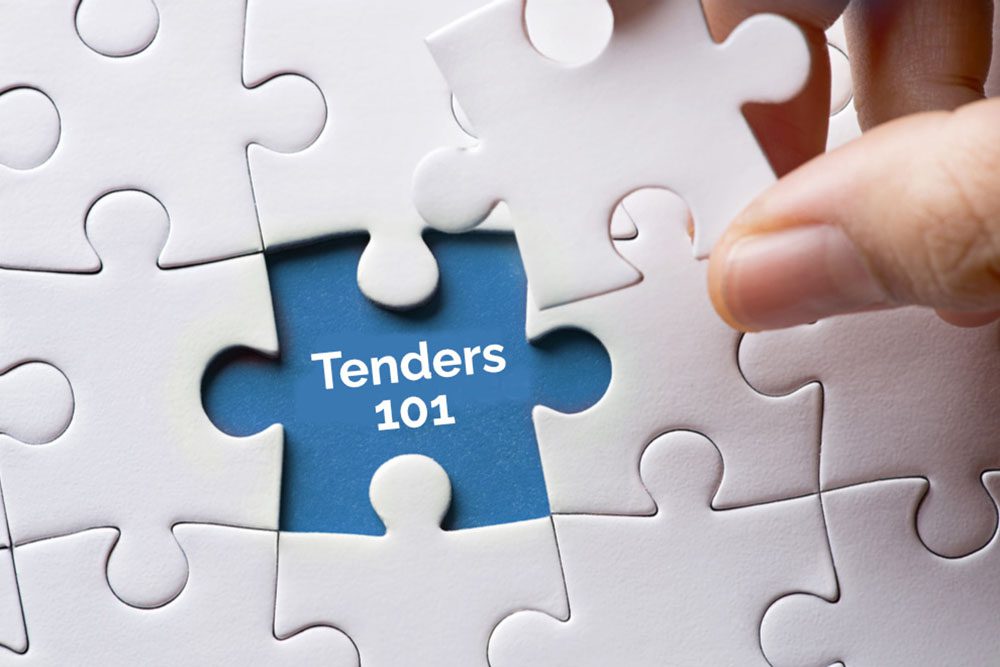We all know every hour counts when you potentially only have 40 working days (8 weeks) to craft and submit your tender response. Any delays in sourcing and qualifying tender opportunities can have big implications further down the line. Days and even weeks can pass before your Bid Team has sight of the work they need to do.
This can result in rushed preparation of tender submissions, with poorly crafted responses that secure low evaluation scores and ultimately lose you the bid!
Let’s look at some examples of these delays and how they can impact your 8-week deadlines.
We are by no means suggesting a perfect storm in which all of these delays occur. But how many of these challenges do you recognise from your own business? And what impact do they have on your deadlines?
Working Days to Go
Stage 1: Sourcing Tender Opportunities
With 100s of tender notices published daily, finding opportunities that are properly aligned to your business plans and goals can be time consuming.
- Too Many Tender Notifications Received: Without a defined targeting strategy, registration to appropriate Public Procurement Portals (e.g TED EU, SAM US) and the clever use of search criteria (e.g. procurement codes/keywords etc.) you may receive vast numbers of mismatched Tender Notification in your Email Inbox.
- Time Consuming Tender Notification Assessment: Assessment of Tender Notices needs to be daily activity to ensure best-fit opportunities are actioned as quickly as possible.
A full Inbox may result in valuable time being taken with filtering out and deleting irrelevant or duplicated tender notices. Mismatched opportunities may be passed through for qualification and more importantly best-fit opportunities missed or not prioritised.
- Documents Downloaded from Procurement Agency: Downloading documents from Procuring Agency Portals can take time, especially when dealing with multiple opportunities. This may require initial registration, forgetting login credentials or resetting passwords. If documents are then stored on a local drive with no directory structure, they are inaccessible to the Sales Team to aid in qualification. The documents will then need to be emailed across, a further inefficiency and delay.
- Difficulties in Sales Team Allocation: Once a tender opportunity is assessed for qualification, it needs to be assigned to a salesperson to take action. Notifications can be easily sent to the wrong salesperson if dealing with a large sales team responsible for different regions. Again, hindering progress. Notifications may be buried in salesperson’s Email Inbox and with no prioritisation set, can also cause delays.
63% of the businesses surveyed were taking way too long to respond to their leads. Harvard Business Review
Working Days Remaining
Stage 2: Qualifying Tender Opportunities
- Salesperson Receives Notification but Away on Holiday: So, the tender opportunity notice lands in the salespersons Inbox but he has forgotten to put his ‘Out of Office’ on and due to a lack of documented formal process there is no escalation or cover in place to move the qualification forward.
Even if cover is available, a lack of recorded actions within a central sales platform (spreadsheets, CRM etc) can cause confusion and work unnecessarily delayed.
- Salesperson Returns to Work: On return the salesperson will undoubtedly be busy catching up with other work or out of the office seeing clients. Vital opportunities may be missed or delayed in a backlog of emails, or priority given to less well-matched opportunities.
- Salesperson Starts Qualifying Opportunities: On receipt of the opportunity notice the salesperson will probably need to add the details to the sales platform, possibly a spreadsheet or CRM. This involves further manual data input. Procurement Agency documentation will also need to be readily available and attached to the record. They may be supplied with the original notification email or need to be re-downloaded from the Procurement Agency Portal.
If no priority level has been set for opportunities at the initial assessment stage, then best-fit opportunities may be delayed and dealt with after other less relevant tenders. This can then set the precedent for the rest of the bidding process, when critical focus should be on delivering the highest quality responses to best-fit tenders.
- No Defined Qualification Process: Without a well-defined sales process with comprehensive qualification criteria available, inconsistent decisions will be made across the Sales Team. This can run the risk of poor-quality opportunities being processed for submission, that are unaligned to business plans and goals.

Working Days Remaining
- Delayed Approvals Stage: It is important that qualified opportunities are formally signed off before handover to the Bid Team for creation. Without such a process, tenders not fully aligned to your business strategies and goals may be submitted. These are more likely to be lost but if won can cause potential risks in the contract delivery stages, impacting profits and brand reputation.
Delays in securing approvals can also occur when a Sales Manager is away from the workplace or a tender is escalated for full Management Team approval. This can potentially delay the process by days or even weeks.

Only 20 Working Days Remaining
Stage 3: Creating Tender Submission
- Delayed Handover to Bid Team: It’s now time to handover the approved qualified opportunity to the Bid Team. This is such a critical stage. It is essential to ensure the project team is fully briefed and conversant with the tender details.
If a project team is not assigned or receive early notification of the opportunity, then they may not all be in attendance at the briefing session and consequently may misunderstand the objectives, risks and goals to be achieved.
Where documentation and sales insight are not readily available and easily accessible via a shared platform, further delays and mistakes can occur.
Not only is the Bid Team under-informed but they are now under real pressure due to the delays. They only have 20 working days to generate responses, secure approvals and submit the tender!
How to Avoid the Delays in Tender Opportunity Management
Many of the delays described above can be easily avoided. Undertaking a review of the whole process is essential. Including an assessment of prior tenders to determine level of delays and subsequent impact of the tender quality, evaluation scores and wins rates will provide useful insight.
Only then can you determine areas for improvement. These include the adoption of:
- Proper Strategies: to ensure alignment of tenders with business objectives, goals and products.
- Defined Processes: to secure streamlined, efficient and effective sourcing and qualification.
- Good Teamworking: to foster good communication, collaboration and team accountability.
- Dedicated Bid Management Technology: to deliver a fully integrated solution across the whole bid management process and support the above 3 improvement areas.
Only then can you give your Bid Team the best chance with the optimum number of working days to finesse your responses, score higher evaluation scores and improve win rates. Which is what it’s all about!









